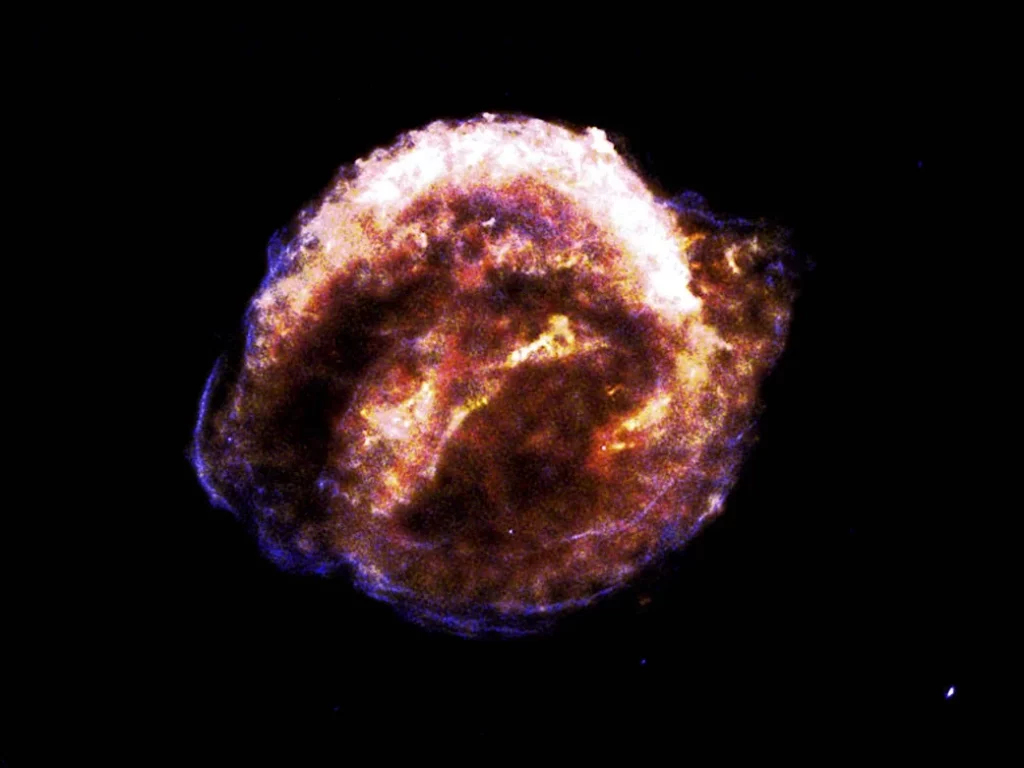Astronomers have watched a giant star blow up in a fiery supernova for the first time ever — and the spectacle was even more explosive than the researchers anticipated.

Scientists began watching the doomed star — a red supergiant named SN 2020tlf and located about 120 million light-years from Earth — more than 100 days before its final, violent collapse, according to a new study published Jan. 6 in the Astrophysical Journal.

During that lead-up, the researchers saw the star erupt with bright flashes of light as great globs of gas exploded out of the star’s surface.
NASA Has Specified Regions On Mars Forbidden To Explore
Mind-blowing Discovery! Sun-Like Star Devours Earth-Like Planet, Heralding Earth’s Ultimate Fate!
There are 6 Billion Earth-Like Planets in the Milky Way Galaxy Alone, Astronomers Find
.jpg)
These pre-supernova pyrotechnics came as a big surprise, as previous observations of red supergiants about to blow their tops showed no traces of violent emissions, the researchers said.
“This is a breakthrough in our understanding of what massive stars do moments before they die,” lead study author Wynn Jacobson-Galán, a research fellow at the University of California, Berkeley said in a statement. “For the first time, we watched a red supergiant star explode!”
When big stars go boom
Red supergiants are the largest stars in the universe in terms of volume, measuring hundreds or sometimes more than a thousand times the radius of the sun. (Bulky though they may be, red supergiants are not the brightest nor the most massive stars out there.)
Like our sun, these massive stars generate energy through the nuclear fusion of elements in their cores. But because they are so big, red supergiants can forge much heavier elements than the hydrogen and helium that our sun burns. As supergiants burn ever more massive elements, their cores become hotter and more pressurized. Ultimately, by the time they start fusing iron and nickel, these stars run out of energy, their cores collapse and they eject their gassy outer atmospheres into space in a violent type II supernova explosion.
Scientists have observed red supergiants before they go supernova, and they have studied the aftermath of these cosmic explosions — however, they’ve never seen the whole process play out in real time until now.
The authors of the new study began observing SN 2020tlf in the summer of 2020, when the star flickered with bright flashes of radiation that the team later interpreted as gas exploding off of the star’s surface. Using two telescopes in Hawaii — the University of Hawaii Institute for Astronomy Pan-STARRS1 telescope and the W. M. Keck Observatory on Mauna Kea — the researchers monitored the cranky star for 130 days. Finally, at the end of that period, the star went boom.
The team saw evidence of a dense cloud of gas surrounding the star at the time of its explosion — likely the same gas that the star ejected during the prior months, the researchers said. This suggests that the star started experiencing violent explosions well before its core collapsed in the fall of 2020.
“We’ve never confirmed such violent activity in a dying red supergiant star where we see it produce such a luminous emission, then collapse and combust, until now,” study co-author Raffaella Margutti, an astrophysicist at UC Berkeley, said in the statement.
These observations suggest that red supergiants undergo significant changes in their internal structures, resulting in chaotic explosions of gas in their final months before collapsing, the team concluded.

